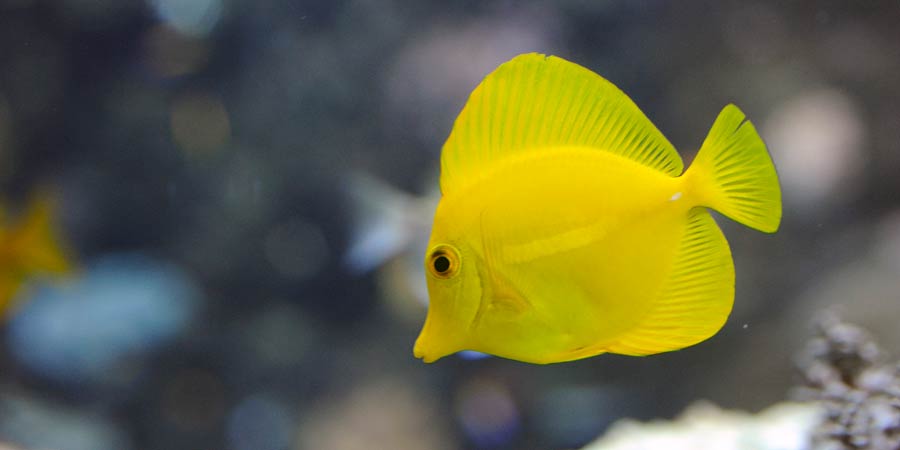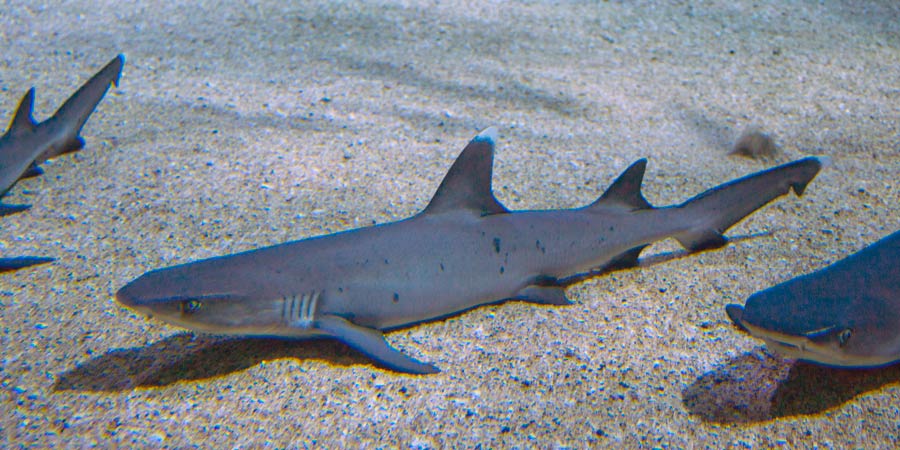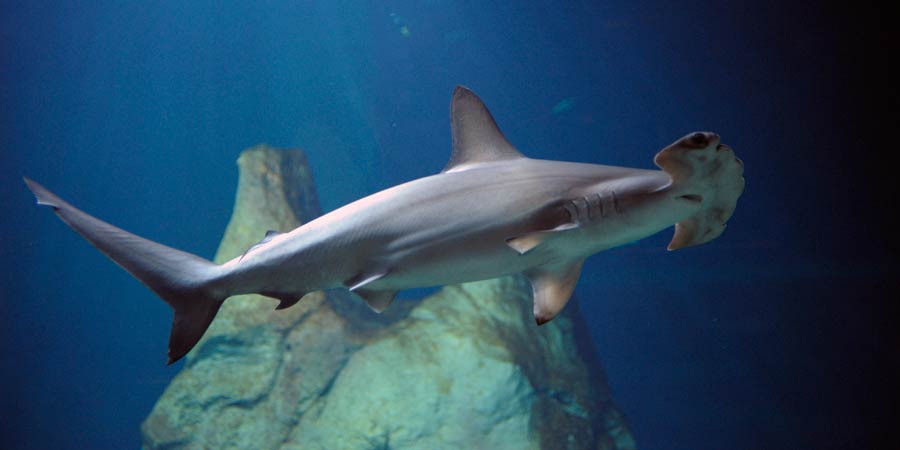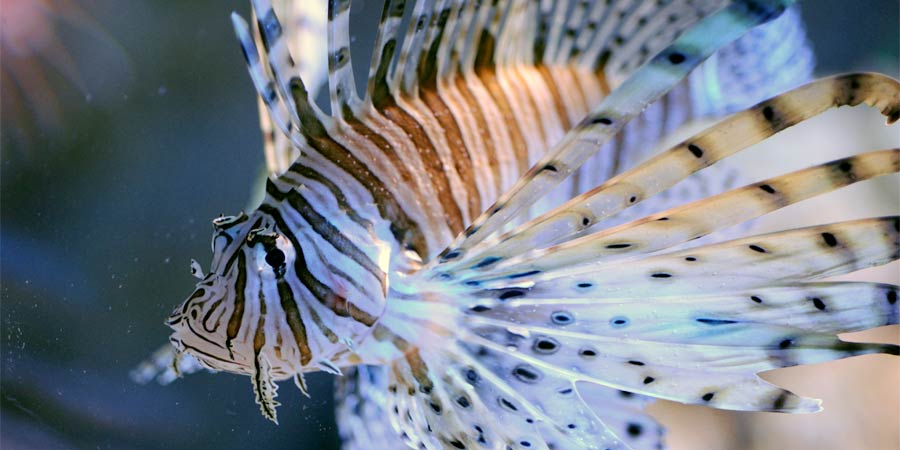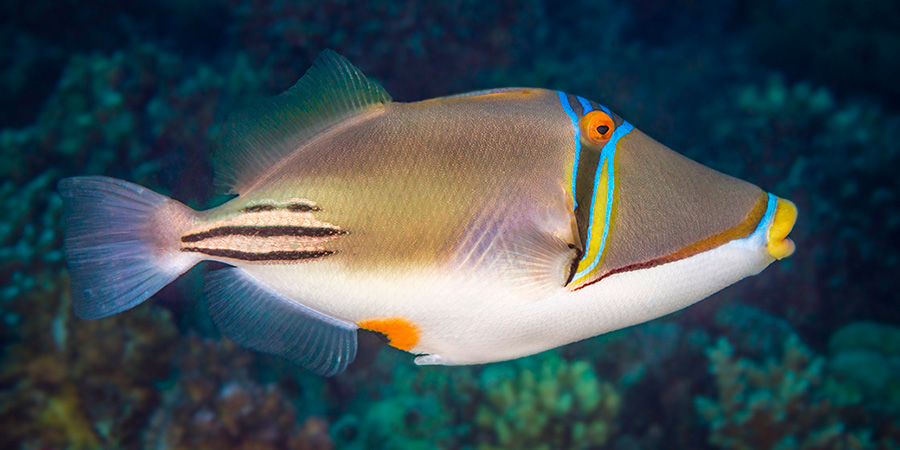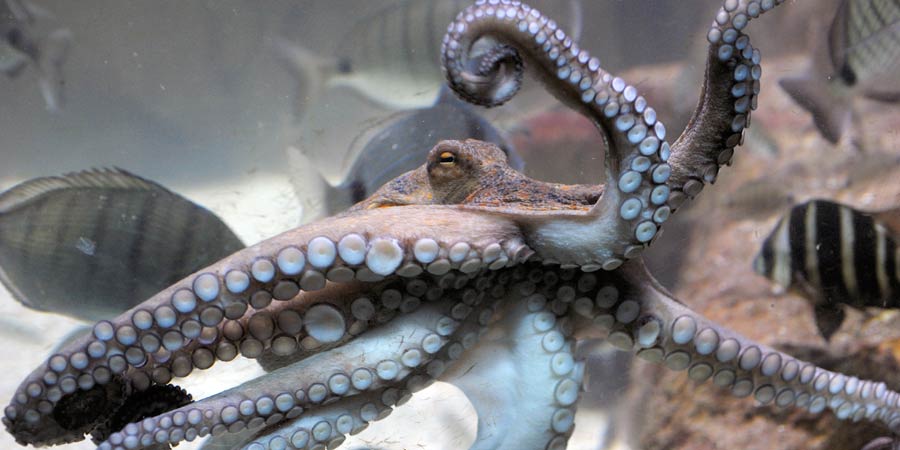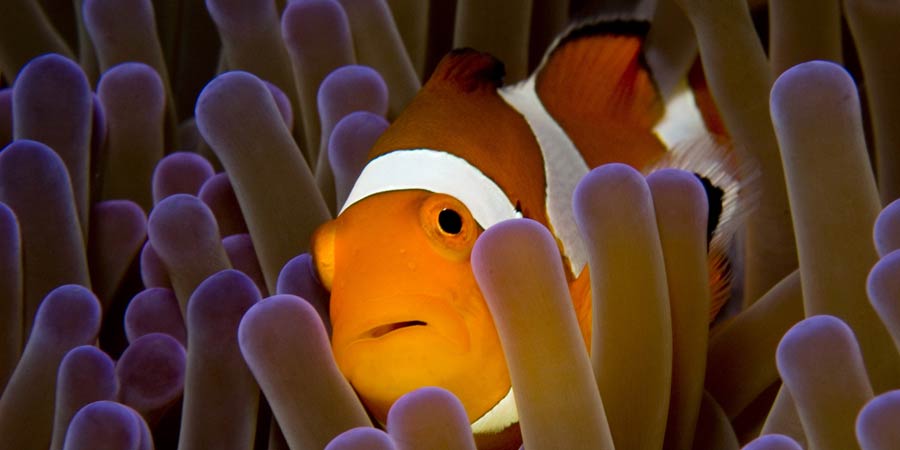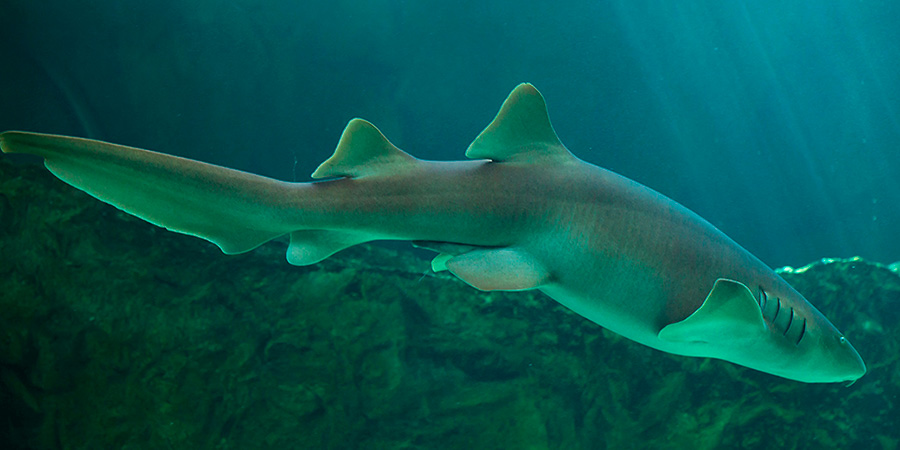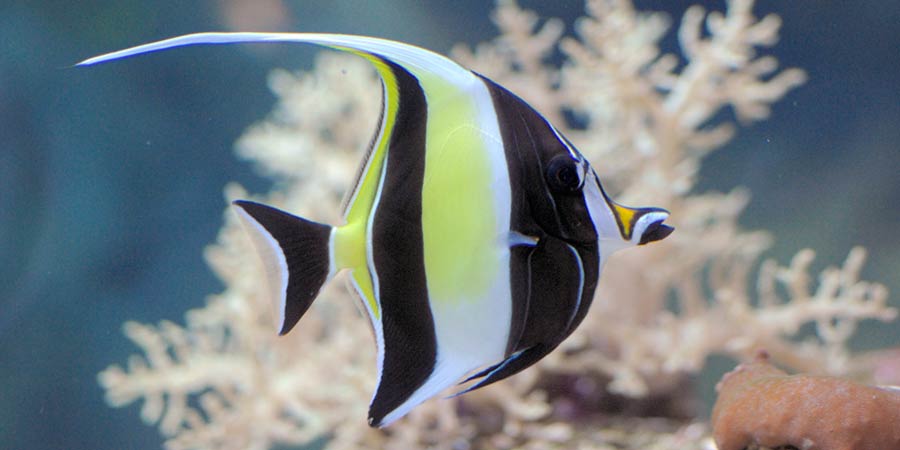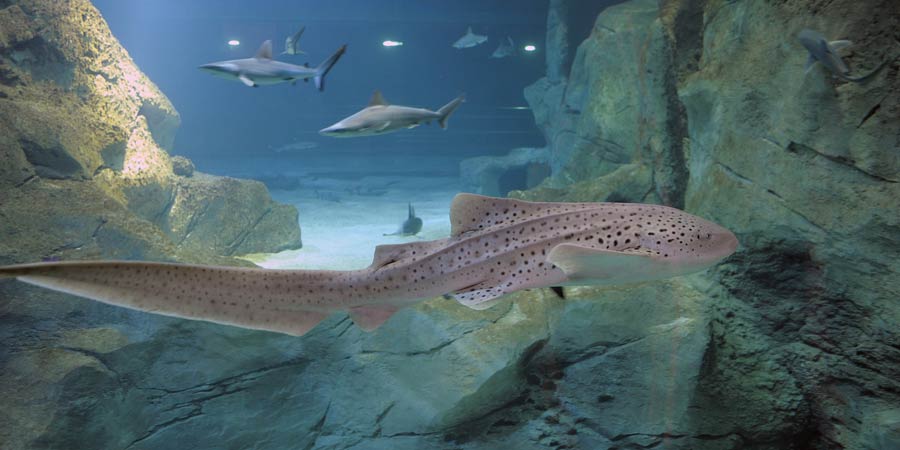
Scientific name : Stegostoma fasciatum
Family : Stegostomatidae
Size : Up to 350 cm
Depth : Up to 30 m
Distribution : Red sea, Indo-Pacific
Morphology : The slender body is beige-yellow, with a multitude of black spots. These spots are more or less round and regular and more or less intense or spread out depending on the individual. The belly is lighter. When young it is black with white stripes.
Biology : It lives alone on the reef in search of molluscs, crustaceans, small fish and sea snakes. It is an oviparous species (the female lays eggs, so the embryo grows externally to the mother’s body). The egg-laying rate is 2 to 4 eggs.
IUCN red list : Endangered

